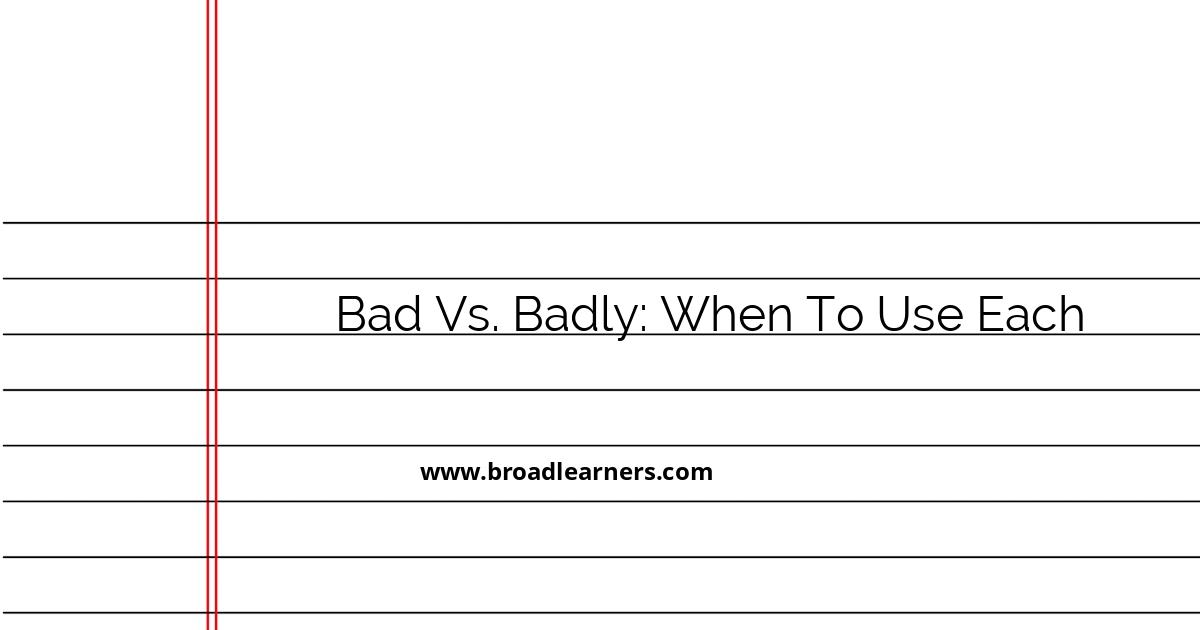In English, a common grammatical question arises regarding the appropriate use of the words "bad" versus "badly." Both words describe adverse conditions, but they function differently in a sentence. Understanding the distinction is crucial for precise and clear communication. This guide will elaborate on the difference between "bad" and "badly," providing examples and explanations for beginner-level understanding.
- Bad
The word "bad" is an adjective. It describes or modifies a noun or pronoun. When you use "bad," you are expressing a state or quality related to the subject you are describing.
Examples:
- Example 1: "The milk smells bad."
In this sentence, "bad" describes the quality of the noun "milk." The adjective "bad" indicates that the milk has an undesirable odor.
- Example 2: "He feels bad about his decision."
Here, "bad" modifies the pronoun "he," describing an emotional state following a decision. In this context, whether the subject "he" is physically touching something or not is irrelevant—the focus is on his emotional state.
- Example 1: "The milk smells bad."
- Badly
The word "badly" is an adverb. It modifies verbs, adjectives, or other adverbs. Adverbs provide additional information about how an action occurs.
Examples:
- Example 1: "The orchestra played badly."
The word "badly" modifies the verb "played." It describes the manner in which the orchestra performed, indicating that the quality of their performance was not good.
- Example 2: "She wanted the job badly."
In this sentence, "badly" modifies the verb "wanted," expressing the intensity of her desire for the job. It tells us how much she wanted it—the degree of her desire was high.
One confusion often arises in sentences like "I feel bad" versus "I feel badly." "I feel bad" is typically correct because "feel" functions as a linking verb, similar to "am," and needs an adjective (bad) to describe the subject (I). Conversely, "I feel badly" might imply a sensory issue with your sense of touch unless contextually expressed for intensity or mannerisms like "I feel badly for (someone)" suggesting strong empathy.
- Example 1: "The orchestra played badly."
In conclusion, using "bad" and "badly" correctly depends on whether you are describing a noun or how an action is performed. With these guidelines and examples, beginners can distinguish and apply these words effectively in both writing and speaking. Remember, picking the right word can significantly enhance the clarity and professionalism of your communication.

Did I miss anything? Respond below